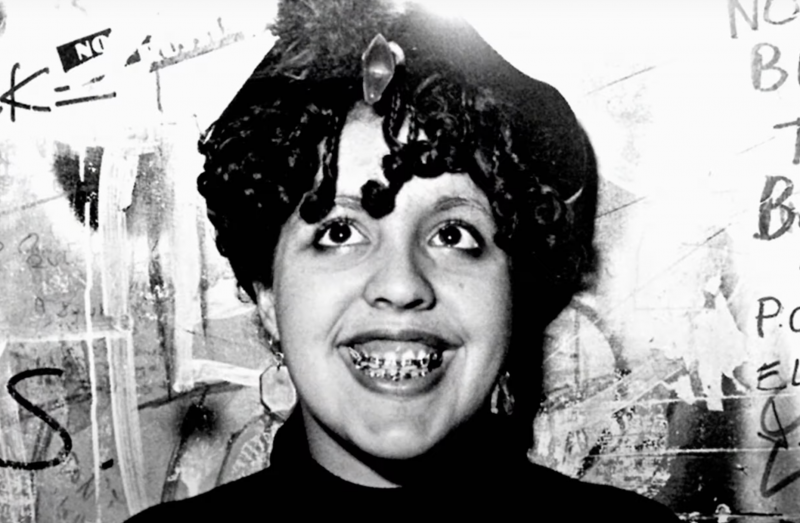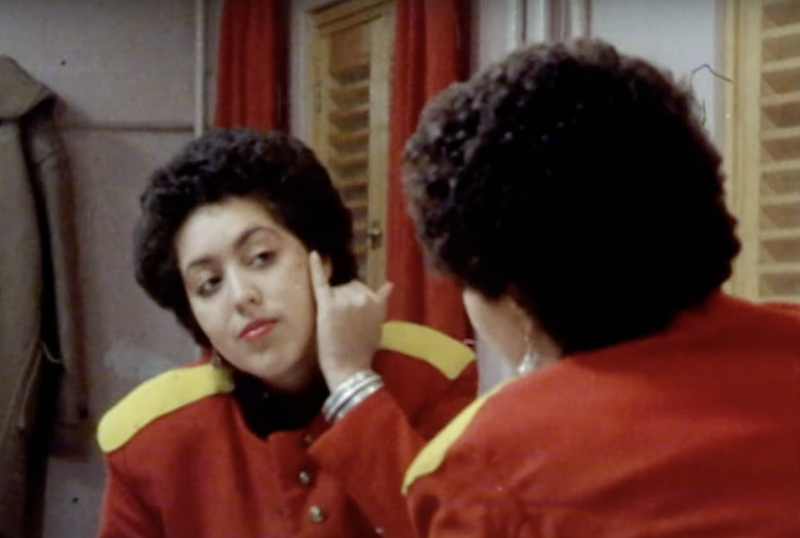Ostensibly, I Am a Cliché is a profile of British punk icon Poly Styrene, who founded and fronted X-Ray Spex between 1976 and ’79. But this 95-minute documentary, directed by Poly’s daughter Celeste Bell-Dos Santos and filmmaker Paul Sng, proves to be much, much more than that.
Poly Styrene Documentary ‘I Am a Cliché’ is Much More Than a Punk Profile

Cliché unpacks a lot. It’s about art on the margins. It’s about the race and gender barriers that have historically policed popular culture. It’s about mental illness, the stigma it carries, and society’s reluctance to deal with it. It’s about dysfunctional families and finding love. And, most surprisingly of all—because of Poly Styrene’s lifelong fear of a culture built on plastic and artifice—it’s about now.
That sounds like a lot. Maybe too much. But nothing about I Am a Cliché feels in the least bit labored. It moves with ease and grace thanks in large part to the forthright narration and emotional grounding provided by Celeste. Styrene’s daughter—who spent portions of her childhood terrified of her own mother—is determined not just to tell her mother’s story, but also to grant the singer a new degree of understanding.
Poly Styrene’s story starts out simply enough: mixed-race girl grows up in working-class neighborhood of South London during a turbulent time in Britain. She discovers punk, takes the initiative to form a band, smashes expectations and breaks boundaries.
The impact of Poly—staunchly unconventional, even in a sea of snarling punks—is worth pausing on to appreciate. Rhoda Dakar of The Bodysnatchers explains that, in some ways, she and Poly were readily accepted into a punk scene dominated by white men, precisely for the ways that they didn’t fit into it.
“Back then,” Dakar explains, “it was fairly unusual to be biracial. In a way, we were embraced by punk because it was full of people that nobody else wanted. We were welcomed because we were already outsiders.”
It is Dakar and Poly’s other female peers in Cliché, who best express the quagmire of being a woman in punk in 1970s Britain. Gina Birch from The Raincoats says: “A lot of men in the media didn’t want women to step into that place. To be given more power and more say and more visibility.”
Writer Vivien Goldman notes: “Everyone always talks about ‘Oh Bondage Up Yours’ because, in a way, that sound cut through a sort of glass ceiling of what women singers could do with their voice.”
Beyond her fearless on-stage persona, Poly was sensitive, empathic and deeply philosophical. She worried about humanity’s future; she worried about a life lived without substance. And unrelenting, sexist scrutiny of her body and image in the music press made her worry she wasn’t good enough.
“She felt like journalists were celebrating her by insinuating that she was unattractive and overweight,” Celeste remembers. “[They were] totally not getting what she was trying to achieve by choosing not to overexpose her voluptuous form on stage.”
Poly’s situation was further destabilized by the fact that she was bipolar but initially misdiagnosed as schizophrenic. All of those elements together made the chaos and propulsion of touring particularly difficult for her. This became very apparent in 1977 when X-Ray Spex spent time in New York and played the legendary punk venue CBGB. (Sonic Youth’s Thurston Moore was in attendance and the memories he shares of the show in Cliché are pure gold.)

While the rest of her band simply found New York fascinating and fun, Poly was so overwhelmed by the rampant consumerism, seedy underbelly and drug culture of the city that she never quite recovered from the trip. Celeste says New York annihilated the last shreds of “whatever innocence [Poly Styrene] had left.”
And Poly’s own writings prove it. After returning to London, she wrote:
New York totally blew me apart. I saw everything I’d been writing about, but extreme and for real. For them it wasn’t a joke, it was the way they lived. For me, it was all a joke … It’s so bad that you think ‘God, if that’s what it’s gonna be like, I don’t want it.’ The weird thing about all the plastic is that people don’t actually like it. But in order to cope with it, they develop a perverse kind of fondness for it. Which is what I did … That was what was so frightening about New York.
Viewed from 2022, Poly’s fears about the future—and in particular a culture dominated by plastic (in all senses of the word)—seem positively prophetic. That they were shrugged off by most people in her own time can’t help but feel tragic.
By 1979, Poly’s inner struggles led her to break up the band at the peak of its powers. “Poly Styrene had to die,” Celeste explains, “so that Marianne Elliott [Styrene’s real name] could survive.”
For a time after X-Ray Spex, Celeste and her mother lived in a Hare Krishna community. Later, the two lived alone and Poly lapsed into a severe state of depression. Celeste describes being hungry and neglected to the degree that, at the age of eight, she climbed out of a window to get to the social service employees who had come to check on her. Celeste later declared in court that she would rather live with her grandmother—a choice that caused long-term rifts in the family.
Almost a decade before Poly’s death from cancer in 2011, mother and daughter reunited and became close. But much remained a mystery about Poly when Celeste suddenly lost her. “By the time I started to really appreciate how lucky I was to have such a remarkable woman as a mother and a role model,” Celeste says, “it was too late. She was leaving her body.”
If it sounds like I’ve told you the whole story laid bare in I Am a Cliché, fear not—I’ve barely scratched the surface. I haven’t yet mentioned that it’s also a brilliant snapshot of British punk in its late-’70s heyday. Or that it’s about the importance of community, empathy and tolerance. Or that, at its core, it’s a beautiful meditation on what parents and children owe to one other. More than that, it’s about the tiny earthquakes that rumble around the world and forever change it when marginalized people elbow their way into closed-off spaces, and force other people to listen to them.
Poly Styrene was one of those people. Her legacy is bigger than you might think.

‘I Am a Cliché’ arrives in movie theaters across the U.S. on Wednesday, Feb. 2, 2022. It will be available on demand starting Feb. 4, and begins streaming on Showtime in June. Details here.

